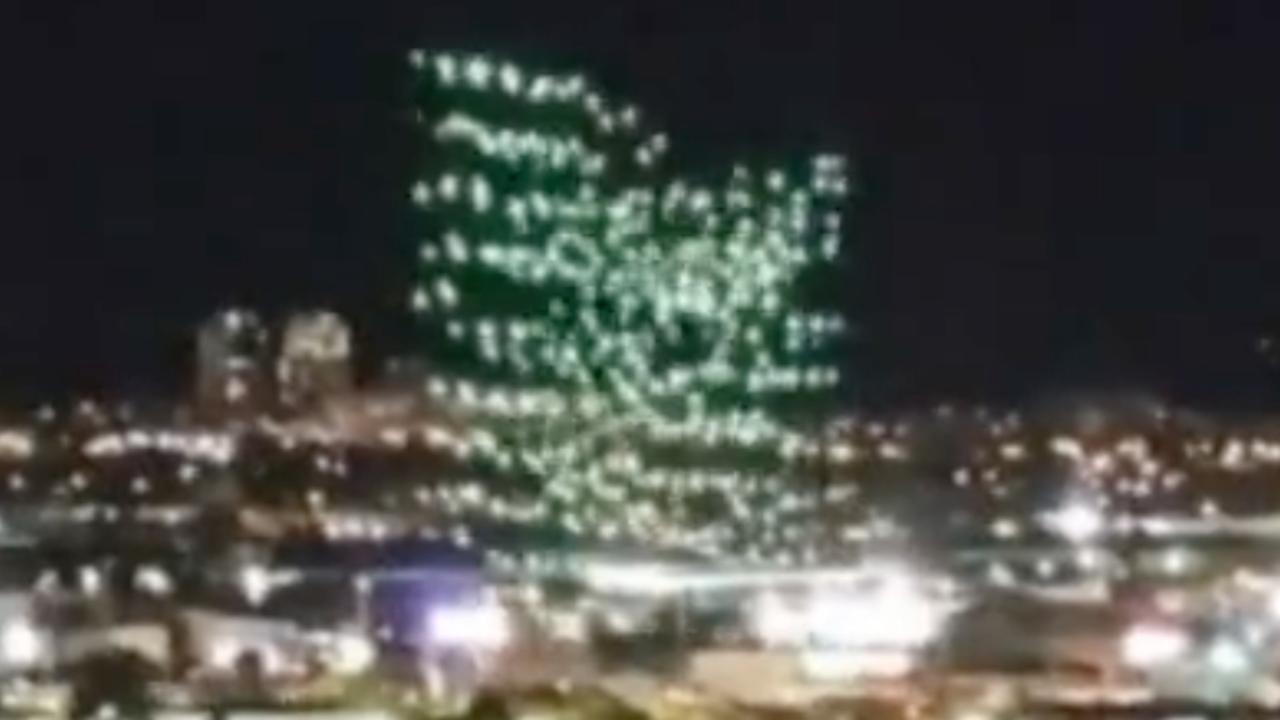Orlando drone show malfunction: A spectacular light show turned unexpectedly chaotic when a series of malfunctions disrupted the planned aerial display. This incident, which unfolded before a large audience, raises critical questions about safety protocols, technological reliability, and the future of large-scale drone performances. We will explore the sequence of events, the technical causes, public reaction, and the resulting implications for the drone show industry.
The incident involved a significant number of drones, resulting in erratic flight patterns and a premature end to the performance. The malfunction prompted immediate safety measures, and an investigation is underway to determine the root cause and prevent future occurrences. This analysis delves into the technical aspects of the drones, examining potential software glitches, hardware failures, and environmental factors that might have contributed to the event.
The recent Orlando drone show malfunction highlighted the inherent risks in large-scale drone displays. One wonders if companies like those showcasing their technology, such as sky elements drones , have similar safety protocols in place to prevent such incidents. Ultimately, the Orlando incident underscores the need for rigorous testing and fail-safes in all drone operations, regardless of scale.
The Orlando Drone Show Malfunction
A recent drone show in Orlando experienced a significant malfunction, resulting in a spectacular, albeit unsettling, display for the audience. This incident serves as a case study in the challenges of large-scale drone operations and highlights the crucial need for robust safety protocols and technological advancements in the field.
The Orlando drone show malfunction highlights the inherent risks in large-scale drone displays. Such incidents underscore the importance of rigorous safety protocols, as evidenced by the unfortunate consequences detailed in this report on a drone show accident. Understanding the causes of these failures, whether in Orlando or elsewhere, is crucial for preventing future malfunctions and ensuring public safety.
The Orlando Drone Show Incident: A Detailed Account

The incident unfolded during the climax of the drone show. Hundreds of drones, programmed to perform a complex synchronized light display, suddenly deviated from their planned flight paths. The initial stages of the show proceeded without incident, with the drones executing their programmed routines flawlessly. However, approximately halfway through the performance, a noticeable disruption occurred. Several drones began to exhibit erratic flight patterns, veering off course and colliding with each other.
This triggered a cascading effect, leading to a significant portion of the drone swarm behaving unpredictably. Within minutes, a large number of drones fell from the sky, while others continued to display erratic movements before eventually losing power and descending. Emergency personnel immediately initiated safety protocols, securing the area and ensuring the safety of the spectators. The entire incident lasted approximately five minutes.
Technical Aspects of the Malfunction
Several factors could have contributed to the malfunction. Potential causes include software glitches in the flight control system, hardware failures in individual drones (such as GPS module malfunctions or battery issues), or interference from external factors like electromagnetic pulses or radio frequency interference. The show likely employed a centralized control system, broadcasting commands to each drone individually, and a failure at any point in this communication chain could have triggered the cascade effect observed.
While redundancy systems are often built into such systems, the incident suggests that these may not have been sufficient to mitigate the scale of the failure. Industry best practices advocate for multiple layers of redundancy, including independent control channels and backup power systems. The specific technology used in this show remains undisclosed but likely involved GPS, inertial measurement units (IMUs), and sophisticated communication protocols for synchronization and command transmission.
A hypothetical improved safety system could incorporate more robust error detection and recovery mechanisms, independent flight controllers with fallback capabilities, and a system for automated drone grounding in case of communication loss or system failures. Additionally, more advanced obstacle avoidance systems could prevent mid-air collisions. Real-time monitoring and analysis of drone health parameters would allow for proactive interventions before widespread failures occur.
Impact and Response
The public reaction ranged from awe and excitement to concern and apprehension. Many videos of the incident went viral on social media, generating significant public discussion. The organizers immediately issued a statement apologizing for the incident and assuring the public of their commitment to safety. Local authorities conducted a preliminary investigation to assess the situation and ensure no one was injured.
Further investigations, possibly involving the drone manufacturer and relevant aviation authorities, are likely to be conducted to determine the root cause of the malfunction and to prevent similar incidents in the future.
| Source | Perspective | Key Points |
|---|---|---|
| Eyewitnesses | Spectacular but concerning | Initial awe quickly turned to worry as drones fell from the sky; concern for safety of spectators and operators. |
| Organizers | Apology and commitment to safety | Public apology, pledge to investigate and improve safety protocols, emphasis on no injuries reported. |
| Authorities | Safety review and investigation | Initial assessment of safety protocols, initiation of a formal investigation into the cause of the malfunction. |
Preventive Measures and Future Implications
Several measures can be implemented to enhance safety protocols for future drone shows. These include more rigorous testing and simulation of flight routines, improved redundancy in control systems and communication protocols, and enhanced real-time monitoring capabilities. The incident will likely lead to a review of existing regulations and insurance policies for drone shows, potentially resulting in stricter requirements for safety and liability.
The recent Orlando drone show malfunction sparked discussions about the reliability of large-scale drone displays. One company often mentioned in relation to high-quality, dependable drone shows is Sky Elements Drones; you can learn more about their technology and capabilities at sky elements drones. The Orlando incident highlights the need for robust systems, emphasizing the importance of choosing a reputable provider for future drone light shows.
This event may also prompt advancements in drone technology, particularly in the areas of autonomous flight control, fault tolerance, and communication security.
- Implement rigorous pre-flight checks and simulations.
- Employ multiple redundant control systems and communication channels.
- Develop advanced obstacle avoidance and collision detection systems.
- Establish clear emergency response protocols.
- Invest in robust real-time monitoring and data analysis capabilities.
- Regularly update software and firmware to address known vulnerabilities.
Visual Representation of the Incident, Orlando drone show malfunction
The malfunctioning drones initially exhibited erratic, jerky movements, deviating from their synchronized patterns. Some spiraled downwards, while others collided mid-air, creating a chaotic visual spectacle. The drones’ lights, initially forming a coherent display, became scattered and disorganized, with individual drones flashing erratically before losing their illumination altogether. For the audience, the initial awe and wonder quickly transformed into a sense of surprise and apprehension as the organized display descended into chaos.
The visual impact was a stark contrast between the planned harmonious light show and the unexpected and somewhat alarming descent of malfunctioning drones. The flight paths of the malfunctioning drones could be described as a series of unpredictable, intersecting lines and spirals, abruptly ending at various points on the ground.
The Orlando drone show malfunction serves as a stark reminder of the inherent risks associated with large-scale drone operations. While drone technology continues to advance, rigorous safety protocols and thorough risk assessments remain crucial. The incident highlights the need for improved redundancy systems, robust communication protocols, and enhanced regulatory oversight to ensure the safety of both audiences and operators.
Moving forward, a comprehensive review of industry best practices and a proactive approach to safety will be essential to maintaining public confidence and preventing similar incidents in the future. The ongoing investigation will undoubtedly shape the future of drone show regulations and insurance policies.
FAQ
What type of drones were used in the show?
This information would need to be sourced from official reports or news articles about the specific event.
Were there any injuries reported as a result of the malfunction?
Information regarding injuries would be found in official reports or news coverage following the incident.
What was the estimated cost of the damage caused by the malfunction?
The financial impact, including damage to the drones and potential losses for the organizers, would likely be detailed in subsequent reports.

